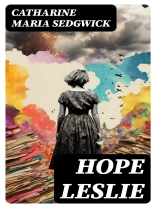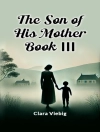In ‘Hope Leslie, ‘ Catharine Maria Sedgwick crafts a captivating narrative that interweaves themes of autonomy, identity, and the clash of cultures in early 19th-century America. Set against the backdrop of Puritan Massachusetts, the novel follows the spirited protagonist, Hope Leslie, as she navigates the complexities of gender, friendship, and colonial tensions. Sedgwick employs a rich, descriptive literary style, blending elements of romance, adventure, and social commentary, with profound insights into the lives of women and Native Americans, showcasing her innovative approach in the context of antebellum literature. Catharine Maria Sedgwick, a pioneering figure in early American literature, was influenced by her upbringing in a prominent New England family and her keen awareness of the sociopolitical issues of her time. As a member of the transcendentalist movement and an advocate for women’s rights, Sedgwick’s life experiences notably shaped her narrative voice in ‘Hope Leslie.’ Her commitment to social reform resonates throughout the text, particularly in her nuanced portrayal of diverse characters and their struggles. I highly recommend ‘Hope Leslie’ to readers interested in exploring the intricacies of early American literature and the representation of women’s agency in a largely patriarchal society. Sedgwick’s eloquent prose and compelling characters will leave a lasting impression on anyone seeking to understand the complexities of cultural identity and human relationships.
Tentang Penulis
Catharine Maria Sedgwick (1789-1867) was a transformative figure in early American literature, and a preeminent voice in the development of domestic fiction. Born into a prominent New England family in Stockbridge, Massachusetts, Sedgwick published her first novel, ‘A New-England Tale, ‘ in 1822, which established her literary reputation. However, it was her third novel, ‘Hope Leslie’ (1827), that cemented her place in the American literary canon. ‘Hope Leslie’ is a historical romance set in seventeenth-century America that challenges the period’s gender norms and interrogates colonial interactions with Native Americans. Sedgwick’s innovative narrative strategies and her subversion of traditional female roles place her work within the larger context of the American Renaissance, though her contributions have often been overshadowed by her male contemporaries. Her literary style is marked by a clear prose that conveys a powerful moral vision, engaging with themes of social justice, individual agency, and the possibility of reconciliation across cultural divides. In addition to ‘Hope Leslie, ‘ Sedgwick’s notable works include ‘Redwood’ (1824), ‘Clarence’ (1830), and ‘The Linwoods’ (1835). As a pioneer in American fiction and an advocate for women’s rights and abolition, Sedgwick’s legacy endures as an emblem of nineteenth-century literary achievement and social reform.












